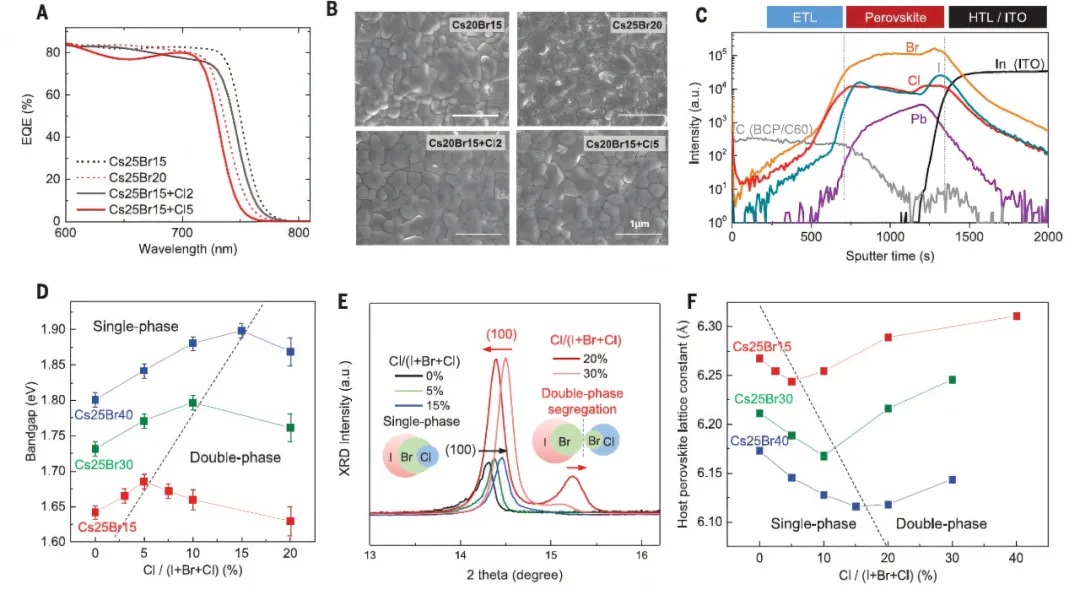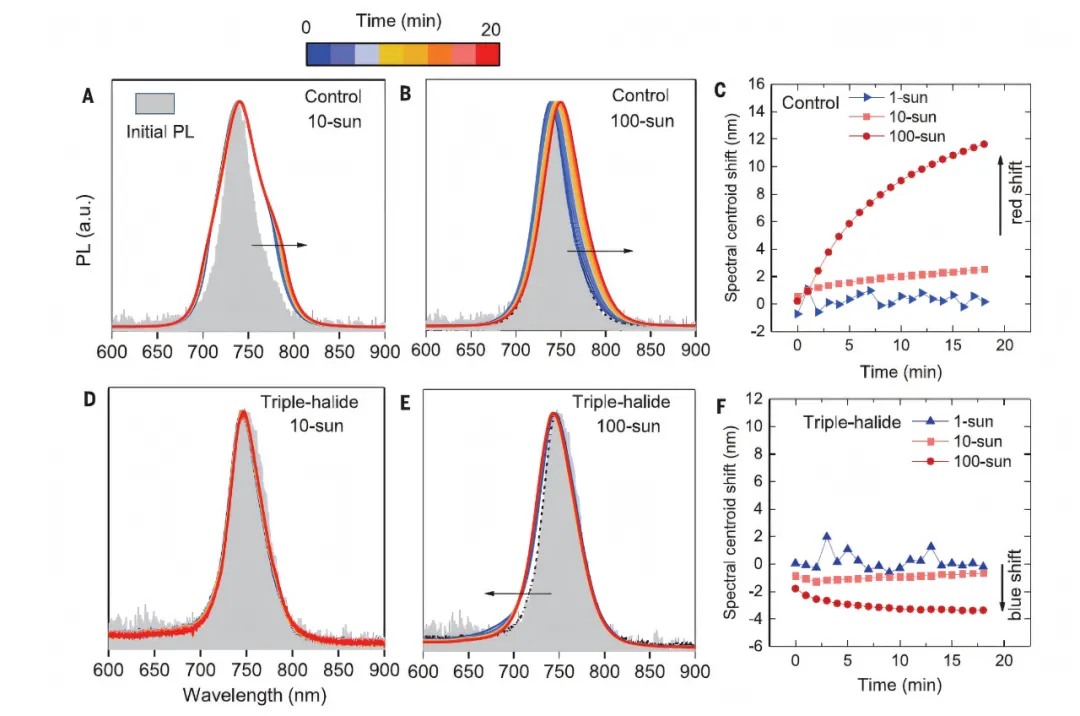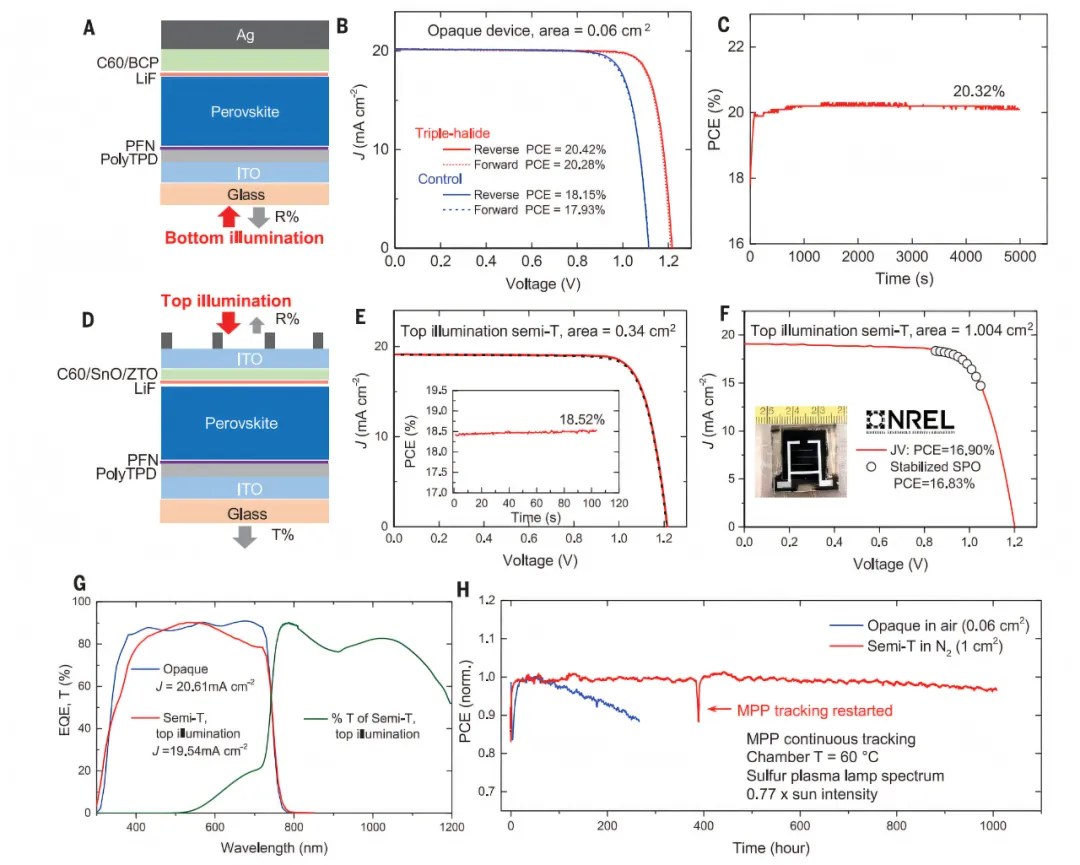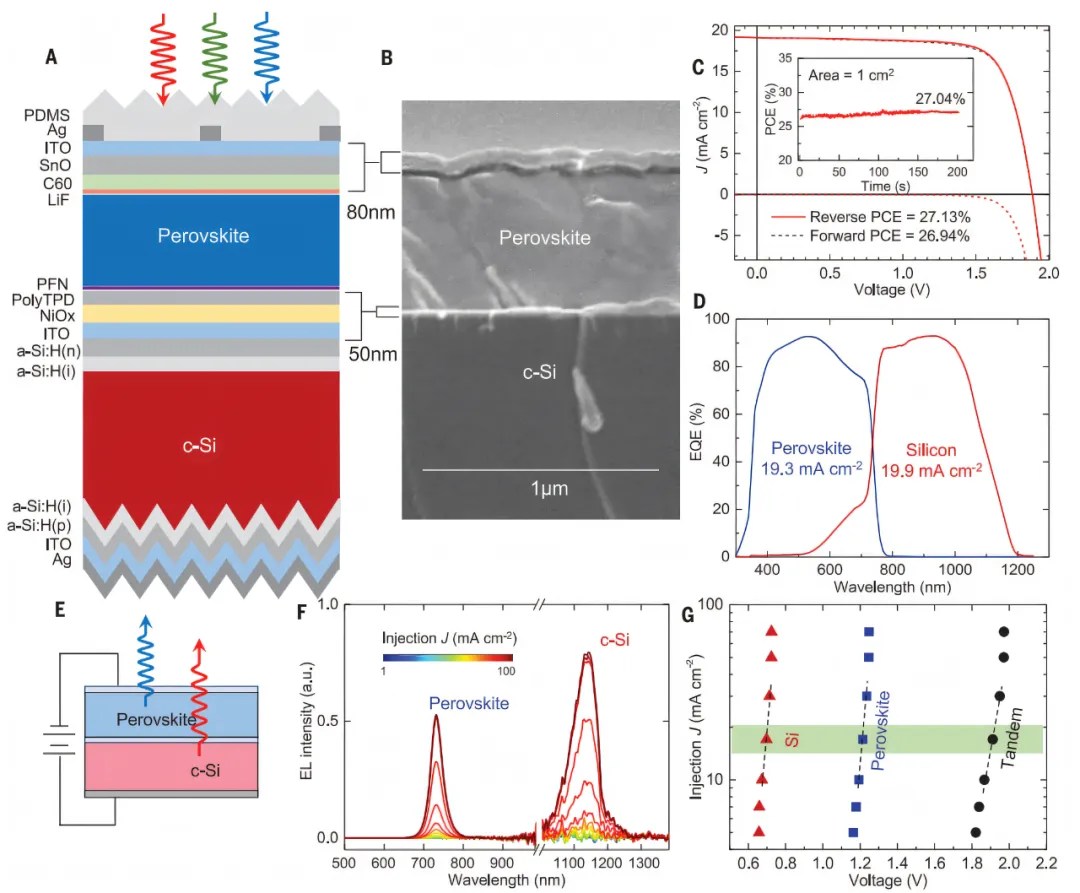Ciencia del equipo de Xu Jixian en USTC: perovskitas de trihaluro de banda ancha con separación de fases suprimida
Wide bandgap metal halide perovskites are ideal semiconductors for use in combination with silicon stacks to achieve power conversion efficiencies (PCE) exceeding 30% while reducing costs. However, wide bandgap perovskite solar cells are fundamentally limited by light-induced phase separation and low open circuit voltage. Quantum efficiency (EQE) testing is critical to verify the performance of triple halide wide bandgap perovskite materials for application in solar cells.
Photovoltaic properties of trihalide perovskites

EQE (Quantum Efficiency) Measurement: By forming trihalide perovskites containing 2-5 mol% Cl, the energy band gap is increased relative to the host perovskite. For example, after Cs25Br15 is mixed with different contents of MAPbCl₃, the energy band gap of the formed film continuously increases from 1.63eV to >1.67eV, indicating that the formation of trihalides has a significant impact on the energy band gap.
The above figure shows the characteristics of trihalide perovskite cells from many aspects, including EQE measurements, SEM images, TOF - SIMS depth profiles, energy band gap evolution curves, and XRD peak shifts and phase transitions. These results jointly reveal The structure and performance characteristics of trihalide perovskites as well as the phase separation mechanism are discussed.
Charge carrier mobility and lifetime in triple halide perovskite thin films

Enhanced charge carrier mobility and lifetime in trihalide perovskite thin films
From the time-resolved microwave conductivity (TRMC) measurement results in the figure, it can be seen that the charge carrier lifetime of the 1.67-eV trihalide perovskite film (Cs22Br15+Cl3) is significantly increased compared to the control film (Cs25Br20). At an absorbed photon flux of approximately 1×10¹⁰ cm⁻² (near 1-sun intensity), the lifetime increases from 420ns to 846ns, approximately twice that of the control sample.
Under different excitation intensities, the charge carrier mobility of trihalide perovskite films is also significantly improved. The mobility of the trihalide film nearly doubled relative to the control double halide film.
Suppression of photoinduced phase separation in triple halide perovskite materials

As can be seen in the figure, the perovskite film exhibits photoinduced phase separation under illumination, and the phenomenon intensifies with the increase of illumination intensity. The trihalide perovskite exhibits good light stability under illumination, and the PL spectrum blue shifts under high illumination intensity. By comparison, it is intuitively proved that the trihalide perovskite has an inhibitory effect on photoinduced phase separation, which provides advantages for its application in high-efficiency solar cells.
Highly efficient and stable tri-perovskite/silicon tandem

Photovoltaic properties of single-junction opaque cells and semi-transparent top cells
EQE spectrum and optical performance: Opaque cells have higher EQE in a wider wavelength range, while semi-transparent cells have a certain degree of transparency in the near-infrared region, and their EQE can also meet certain performance requirements.
Long-term stability testing: Long-term continuous maximum power point (MPP) tracking results for 1-cm² semi-transparent and opaque cells under accelerated conditions (0.77-sun illumination and 60°C). The translucent solar cell showed almost no degradation (<4%) after 1000 hours of continuous MPP operation in N₂ environment, while the opaque cell still retained 90% of the initial PCE after 250 hours of continuous MPP operation in air.
The photovoltaic performance of triple halide perovskite solar cells is significantly improved compared to the control group, including higher PCE, more stable operation, and better photostability.
Photovoltaic properties of 1-cm² two-terminal perovskite/silicon tandem cells
 Photovoltaic properties of 1-cm² double-terminal perovskite/silicon tandem cells
Photovoltaic properties of 1-cm² double-terminal perovskite/silicon tandem cells
Quantum efficiency (EQE) spectra: EQE spectra of a perovskite top cell (blue curve) and a silicon bottom cell (red curve) showing the photoelectric conversion efficiency of the two sub-cells at different wavelengths.
EQE spectra show that the spectral responses of the perovskite and silicon subcells are complementary. Perovskite top cells exhibit higher EQE values in the range of 300-500 nm and 600-900 nm, while silicon bottom cells exhibit higher EQE values in the range of 800-1100 nm.
Triple halide perovskite/silicon tandem solar cells have significant potential in improving photoelectric conversion efficiency. By optimizing the design and manufacturing of perovskite top cells and silicon bottom cells, high efficiencies of more than 30% can be achieved, which is of great significance for promoting the development of solar energy technology.